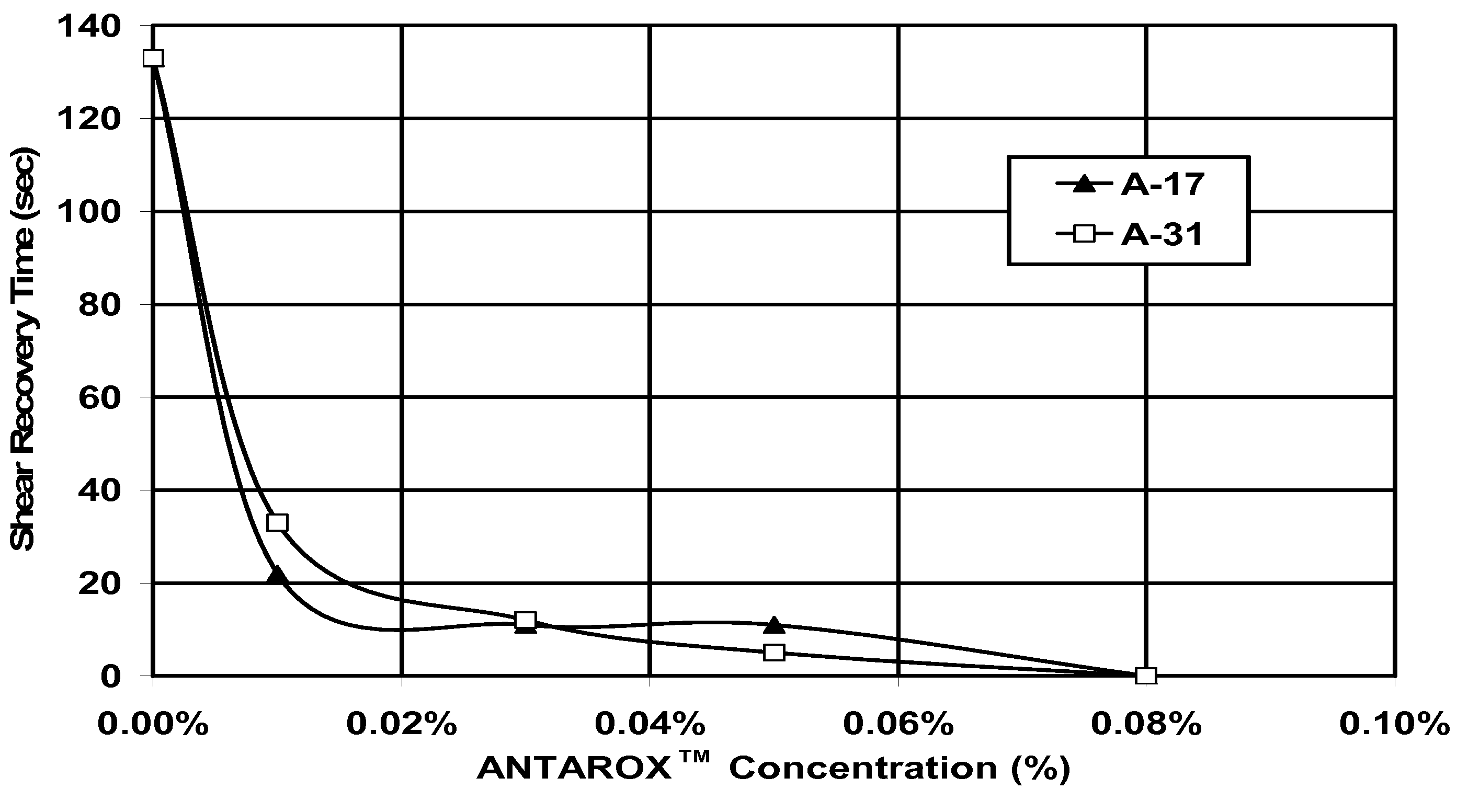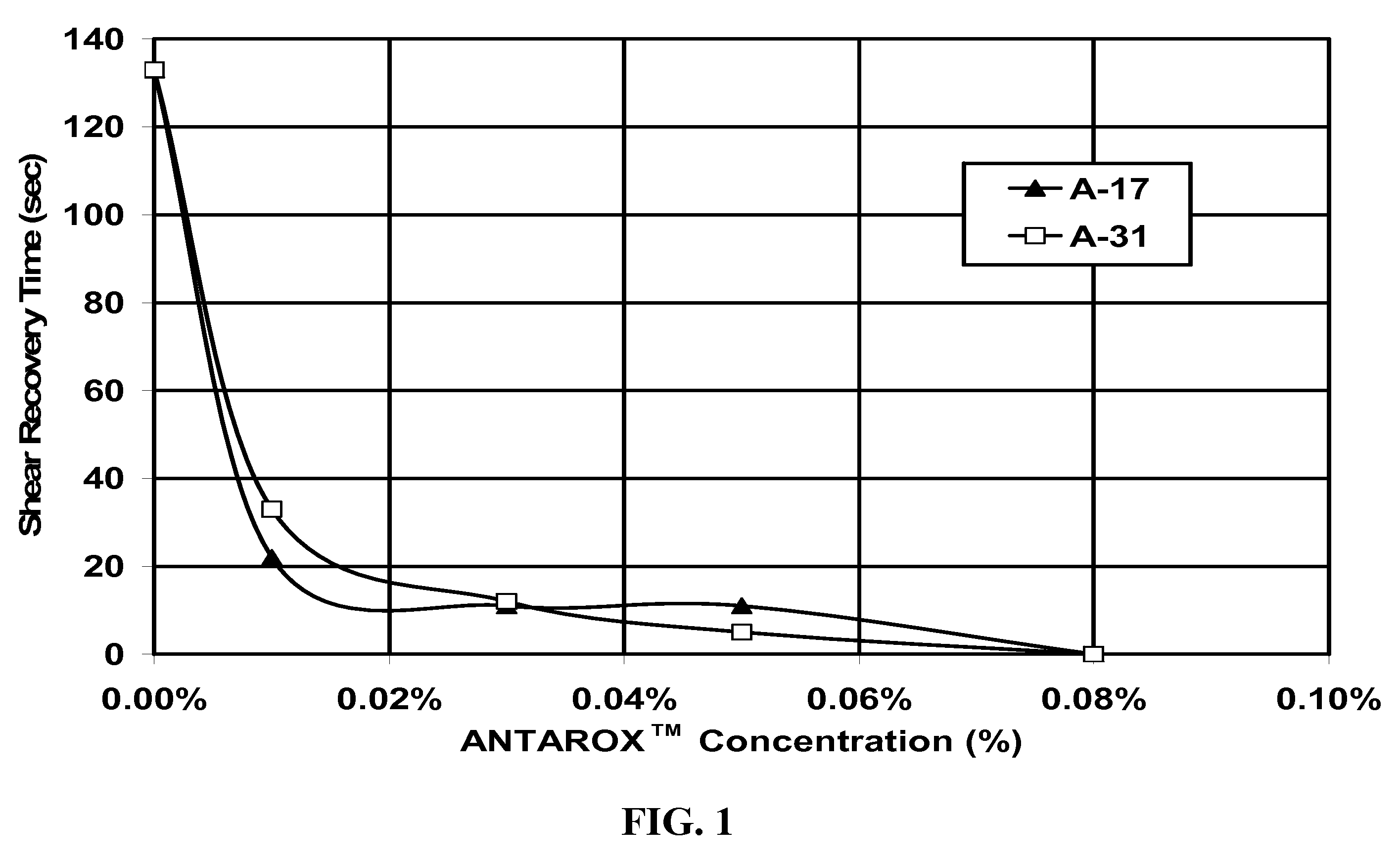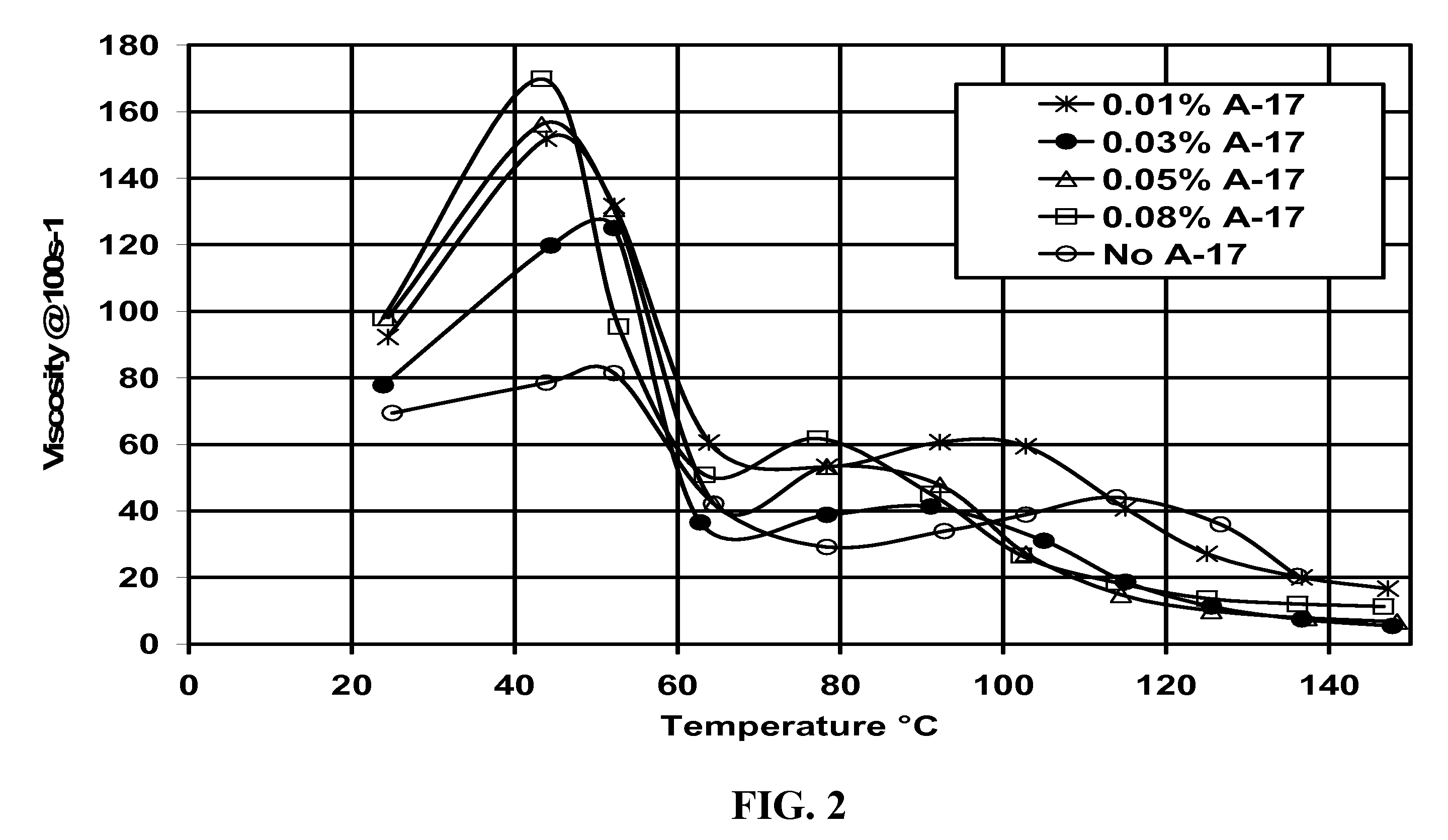Rheology modifiers
a technology of viscoelastic surfactant and modifier, which is applied in the direction of liquid soap, sealing/packing, and well accessories, etc., can solve the problems of reduced stability, increased shear sensitivity, and reduced viscosity, and achieves the effect of increasing the rate of shear rehealing
- Summary
- Abstract
- Description
- Claims
- Application Information
AI Technical Summary
Benefits of technology
Problems solved by technology
Method used
Image
Examples
example 1
[0052]Shear recovery times were determined. In these experiments, approximately 200 mL of already-mixed VES fluid containing the additive was sheared at no less than 10,000 rpm for no less than 30 seconds and no more than 1 minute in a 1 L Waring blender. The shearing was stopped and timing was begun. The fluid was poured back and forth between a beaker and the blender cup and the fluid recovery was characterized by two times, referred to as the initial and final recovery times; both were estimated by visual observation. The initial fluid recovery time was the time at which fluid “balling” occurred (when the fluid showed the first signs of elasticity as indicated by the fluid taking a longer time to achieve a flat surface in the receiving beaker when poured). The final fluid recovery time was the time at which fluid “lipping” occurred. The fluid “lips” when inclining the upper beaker or cup containing the fluid does not result in fluid flow into the container below, but rather the f...
example 2
[0053]FIGS. 2 and 3 show the fluid viscosity as a function of temperature and additive concentration for fluids containing 3 weight % VES and varying amounts of ANTAROX™ 17-R-2 (A-17; FIG. 2) and ANTAROX™ 31-R-1 (A-31; FIG. 3). It can be seen that below about 95° C., each additive increased the viscosity, and, over most of the temperature range between room temperature and about 95° C., the more additive the higher the viscosity, at least up to an additive concentration of 0.08 weight %. It can also be seen that above about 95° C., the effects were much smaller, but the additives reduced the viscosity slightly, with more additive causing a greater reduction. The maximum amount of additive used in the experiments of example 2 (0.08 wt % of the fluid) was about 6.7% of the weight of surfactant (there was 3 wt % in the fluid of a concentrate containing about 40% active surfactant).
example 3
[0054]Shown in FIG. 4 is the viscosity as a function of temperature of fluids containing 6 wt % VES, from about 0.06 to about 0.72 wt % D-17, and 2 wt % KCl, with and without 0.1 wt % PPG. It can be seen that this 4000 molecular weight polypropylene glycol had some effect on the viscosity. Furthermore, in these experiments, the final shear recovery time of the fluid without the PPG was about 15 seconds while the shear recovery of the fluid with the PPG was almost instantaneous. The maximum amount of additive used in the experiments of example 3 (0.1 wt % of the fluid) was about 4.2% of the weight of surfactant (there was 6 wt % in the fluid of a concentrate containing about 40% active surfactant).
PUM
| Property | Measurement | Unit |
|---|---|---|
| time | aaaaa | aaaaa |
| shear rehealing time | aaaaa | aaaaa |
| shear recovery time | aaaaa | aaaaa |
Abstract
Description
Claims
Application Information
 Login to View More
Login to View More - R&D
- Intellectual Property
- Life Sciences
- Materials
- Tech Scout
- Unparalleled Data Quality
- Higher Quality Content
- 60% Fewer Hallucinations
Browse by: Latest US Patents, China's latest patents, Technical Efficacy Thesaurus, Application Domain, Technology Topic, Popular Technical Reports.
© 2025 PatSnap. All rights reserved.Legal|Privacy policy|Modern Slavery Act Transparency Statement|Sitemap|About US| Contact US: help@patsnap.com



